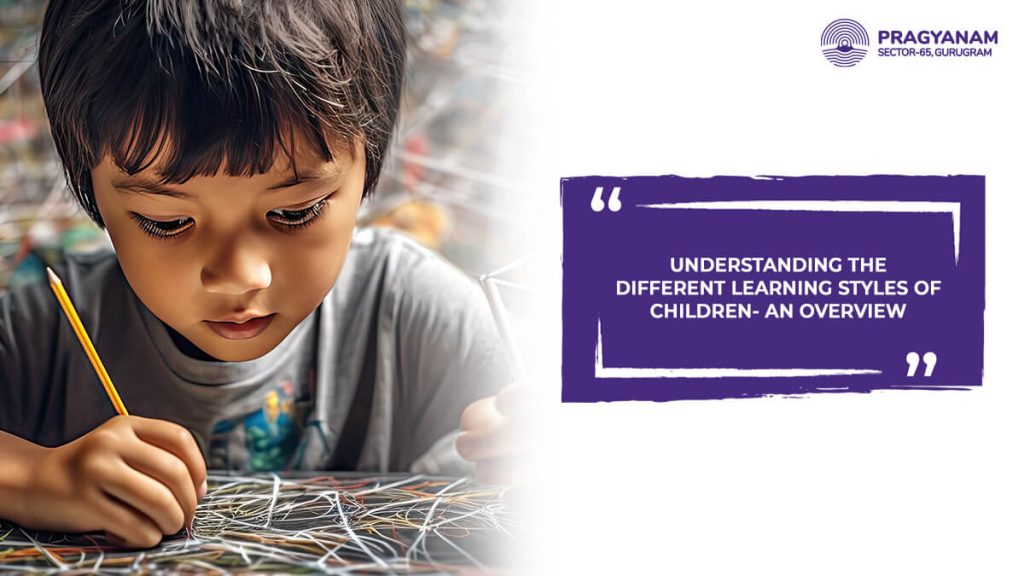While the traditional education system has primarily followed a one-size-fits-all approach, the fact remains that there are different learning styles for children. The concept of different learning styles began to gain precedence as early as the mid-1970s. Many scholars, however, point out that the theory of different learning styles has been around since Carl Jung explored personality types in 1923 and detailed them as follows:
- Extraversion vs. introversion
- Sensation vs. intuition
- Thinking vs. feeling
- Judging vs. perceiving
In terms of learning theories, there are several that address different learning styles. Neil Fleming proposed one particularly popular theory. Interestingly, before working for eleven years in faculty development at Lincoln University, Fleming served as a senior inspector for more than 100 high schools for nine years. During this period, he also observed more than 9000 classroom lessons. While working as an inspector for the New Zealand Education System, Fleming conceived the idea for the VARK model.
Table of Contents
What is VARK?
Broadly, Fleming’s theory suggests that students learn through four different styles or modalities. These four types of learning styles are identified as:
- Visual
- Auditory
- Read/Write
- Kinesthetic
According to this theory, there are four distinct types of learners.
Visual Learners
As the name suggests, visual learners excel when they learn through visual media. Therefore, presenting ideas visually is the most effective approach. These learners not only prefer to learn by observing things but also tend to visualize concepts. Thus, aiding them in creating flow charts, pictures, diagrams, and more is often beneficial.
It is logical to expect visual learners to thrive in classroom settings since they offer various visual learning opportunities, such as the blackboard, screen, handouts, and more. Some of the strengths attributed to visual learners include:
✔ Good visualization skills
✔ Good organizer
✔ Typically has a strong sense of color
A visual learner, therefore, benefits from:
✔ Going through diagrams and other visual aids along with the text
✔ Making to-do lists
✔ Color coding notes
✔ Using flow charts, mind maps, and more
Teaching Aids
In terms of teaching aids for visual learners, some handy ones include:
✔ Presentations
✔ Handouts
✔ Flashcards
✔ Images and videos
✔ Written instructions and feedback

Auditory Learners
An auditory learner is listening-focused. They, therefore, tend to remember information better when it is delivered through speech or sound. Some of the strengths that are ascribed to auditory learners include:
✔ Strong listening skills
✔ High recollection of spoken information
✔ Good speaking skills
An auditory learner, therefore, benefits from:
✔ Reading aloud
✔ Group discussions
✔ Talking through problems
✔ Using rhyming and mnemonic techniques
✔ Audiobooks
Some of the teaching aids that come to help with auditory learners include:
✔ Dialogue and discussions
✔ Follow-up questions
✔ Video & audio recordings
Reading and Writing Learners
The ‘R’ in VARK stands for reading and writing, indicating a preference for information presented in words. These learners have a strong inclination for text-based input and output. In essence, they require reading and writing to comprehend information fully.
What works well for these learners include:
✔ Textbooks
✔ Notes
✔ Lists
✔ Manuals
✔ Reports, and more

Kinesthetic Learners
Kinesthesia’ is defined as ‘the ability to understand the positioning and movement of different body parts.’ Kinesthetic learning, consequently, associates the learning process with physical activity. It is also commonly referred to as tactile or hands-on learning. Kinesthetic learners thrive as active participants rather than passive listeners during a lecture. They retain information through active engagement. Some characteristics of kinesthetic learners include:
✔ Relying on hands-on experience
✔ Learning through movement
✔ Love for experimentation
✔ Enjoys working with tools and instruments
Classroom teaching strategies:
Some of the classroom aids that work for these learners include:
✔ Projects
✔ Games and physical activities
✔ Role Plays
✔ Case Studies
✔ Use of tactile material and more
In addition to the above 4 types of learning that constitute the VARK model, some experts have also suggested the following different types of learning styles:
✔ Logical/analytical learners
✔ Social/linguistic learners
✔ Solitary learners
✔ Nature learners
Logical/analytical learners
True to their name, these learners heavily rely on logic and analysis to grasp a subject. Some of the aspects that are crucial for these learners include:
✔ Cause and effect
✔ Connections
✔ Patterns, and more
Regarding teaching style, what works for these learners is piquing their curiosity to reach conclusions based on facts or reasoning.
Social/linguistic learners
These learners love socialization and benefit from learning involving involvement and interaction. Such learners benefit from:
✔ Group activities
✔ Role Plays
✔ Asking questions
✔ Sharing stories and more
Solitary learners
Unlike social learners, these learners tend to learn better by themselves. They thrive on individual work without having to interact with others.
Nature learners
As the name suggests, such learners learn best amidst nature. Having classes outdoors, as well as using nature to explain concepts, works well with these learners.
Does each learner have only one learning modality?
A learning style is a learner’s preferred and most consistent way of acquiring knowledge. It’s essential to understand that while learners may have a dominant style, multi-modality can be effective for different students. This means a child may have multiple learning styles or preferences. Recognizing this aspect and utilizing various teaching aids in the classroom can significantly benefit different types of learners.
How can teachers cater to different learning styles in the classroom?
Essentially, teachers should employ various teaching methods that accommodate diverse learning styles. For instance, when introducing a new concept, teachers could discuss it, present visual aids such as pictures and videos, and engage students in hands-on activities related to the concept. The key is engaging multiple senses during the teaching process to ensure all learners can benefit.
When teachers take the time to understand various learning styles, they can create engaging lessons to meet the needs of a diverse group of students.
Multiple intelligences vs. learning styles
Every so often, practitioners tend to confuse learning styles with multiple intelligences. Howard Gardner’s theory of multiple intelligences lists the following:
These are:
1. Visual-spatial
2. Linguistic verbal
3. Interpersonal
4. Intrapersonal
5. Logical-mathematical
6. Musical
7. Bodily-kinesthetic
8. Naturalistic
While there is a noticeable overlap with learning styles, it’s essential to understand that learning styles pertain to how a person approaches learning. In contrast, multiple intelligences are more about intellectual abilities. In other words, multiple intelligences represent distinct intellectual capabilities, while learning styles are how an individual approaches various tasks.
To Sum Up
It’s important to remember that the brain processes various types of information in different areas. In addition to considering the different learning styles of students, it’s crucial to recognize that different subjects may benefit from diverse approaches. Therefore, an informed and enthusiastic teacher can make a significant impact by developing various teaching plans in the best CBSE Schools that cater to different learning styles within the classroom and across different subjects. By doing so, they can ignite students’ curiosity and ensure that they maintain a lifelong love of learning.
Here’s to raising a generation of curious and happy learners!





